Related News
Copyright 2012 neutronsources.org | All rights reserved. | Powered by FRM II | Imprint / Privacy Policy
The Accelerator Comes Together in Lund: A Talk With Roland Garoby
Interview. “It is really a treasure chest that is being built here. I’m convinced that the local hosts will be positively surprised by what will pop up out of this during its 40-year lifetime, provided it continues to be supported in the same spirit as it so far has been.”
Date: 16/01/2017
Source: europeanspallationsource.se
LUND—Roland Garoby is the Technical Director for the European Spallation Source (ESS). He came to ESS from CERN in 2014 to lead the construction of the ESS Machine—the Accelerator, Target, and control systems that will keep the facility running reliably and safely. Two years into the job, Garoby is bringing the Machine sub-projects to a critical point—the transition from design and off-site prototyping to construction, on-site installation and commissioning.
Garoby spent 36 years working in CERN’s accelerator complex, where he led the upgrade project of six accelerators feeding the Large Hadron Collider (LHC). The upgrade will increase the luminosity (the number of events per second) in the collider by an order of magnitude. The LHC is the largest accelerator ever built and one of the most successful accelerator projects in history.
For the next three years Garoby will oversee the integration of technical In-Kind Contributions (IKCs) from more than 30 partner institutions throughout Europe. In that time, ESS will transform from a cluster of concrete and steel structures into the site of the most powerful linear proton accelerator in the world.
The interview took place in person on November 15 in Lund and has been edited for length and clarity.
You shift now from coordinating with dozens of partner labs abroad to coordinating their work on-site either sequentially or in parallel, together with a construction contractor and sub-contractors. What challenges do you expect?
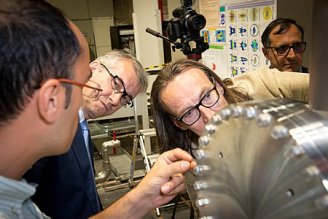
The challenges I was expecting following design and construction at the partners are there, but they have been manageable until now, largely thanks to the constructive and success-oriented attitude of all those concerned. Performing installation on site in safe and efficient conditions is our next challenge. New services have to be organised to plan and ensure timely access of people to the site, as well as for transport, logistics, etc.
Our in-kind partners will deliver, not black boxes, but equipment that they will help install and start commissioning, but then they will move on. ESS has technicians already and we will recruit more. They will contribute to installation and commissioning and finally be responsible for keeping the Machine running once in operation.
Then we have industrial suppliers coming to install equipment directly under our control. For instance, the high-pressure helium pipes that are being installed now. It’s a Swedish company under the control of our cryogenics specialists doing the work. On top of that we will have the support from people from Skanska that we can mobilise. In addition, we will establish some additional framework agreements under which teams will have access to all kinds of competences like electricians, or welders, or what have you—whatever is missing from the in-kind contracts and the already foreseen industrial procurements. So it’s going to be a very complex mixture.

For installation we are also setting up a body to enable all the sub-projects teams to work together, exchange information, and find out the common needs they might have that are better solved centrally. It is something recently decided in the EMT [ESS Management Team], which we call Installation Support Coordination. Peter Rådahl [Head of Engineering and Integration Support division at ESS] has been nominated to lead it.
Safety issues will become more prominent as work moves onto the site, has this had an impact on the focus of work in the Machine Directorate?
The first response, which is not only politically correct but perfectly true, is that safety is a top priority. We want—as Skanska says in their introduction meetings before you can enter the site—we want everybody to come safely home every evening after work.
The fact is that when we were in offices, safety issues were mundane, quite ordinary. We went a little out of the ordinary when we started having test places like the one in the LTH [the Faculty of Engineering], in Lund University, where we are testing modulators, and where we will soon test klystrons. That’s a small-scale example of what we’ll have on site, but that was a really useful training exercise to find out how to address safety in the Swedish context.
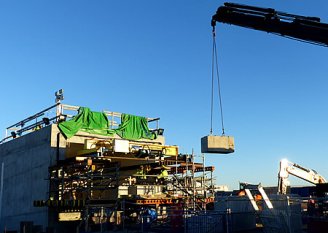
On site the number and variety of safety issues will be much larger and a new approach is needed. We have now Ralf Trant, the new Associate Director for ESH&Q [the ESS Environment, Safety & Health and Quality divisions], a professional in this business. He carried similar responsibilities at CERN for many years. He will guide here the establishment of the necessary rules and procedures for guaranteeing safety.
At ESS we are building an organisation at the same time we are building a facility. I knew it when I arrived, but didn’t realise the effort it represents to shape ESS into a well-oiled organisation. Roughly everything has to be established, and once it is established you have people coming and saying, “Yes, but it could be better,” or, “Oh no, you forgot this,” and it keeps on changing. We continuously revisit the way we are working, thanks especially to the many external reviews. It’s very healthy, but it’s also very demanding.
One of the chief non-technical threats to the schedule is the signing of in-kind agreements with ESS Partners. How has your view of this challenge and your view of ESS Partners evolved through the process?
I was expecting challenges with IKCs based on my past experience, but I was expecting them at the time of construction, fabrication, and possibly delivery because of issues at interfaces, which are always delicate when you count on different partners to design for you. What surprised me here was that the phase of negotiating contracts and getting signatures was much heavier than initially thought. With the many partners that we have, it is not a trivial exercise and it involves significant efforts. This phase is now very advanced, and execution has started for most work packages.
I must underline that our partners at the technical level, the persons in the partner laboratories that we work with regularly, really are highly motivated. It is the bureaucratic part that is often more difficult.
In-kind is really at an extreme here. I have some experience with them at CERN, but not at this scale. Here we already have more than 50 percent of the value of the Accelerator and Target being provided in-kind and we probably will reach 60 percent—there are negotiations ongoing for doing a bit more. Most of the high-tech equipment is designed and built under in-kind agreements. It is really huge and unheard-of, at least in our field of accelerator builders.
Harmonising technical standards across the projects has been one of the thorniest issues at ESS since before your arrival. Where have you been able to make the most impact on resolving these problems?
You’re pointing at a very difficult or delicate part of the ESS project, making sure that the Machine we are building can be assembled and maintained in reasonable conditions, with a minimum number of spares and tools. Hardware items as well as software tools are concerned.
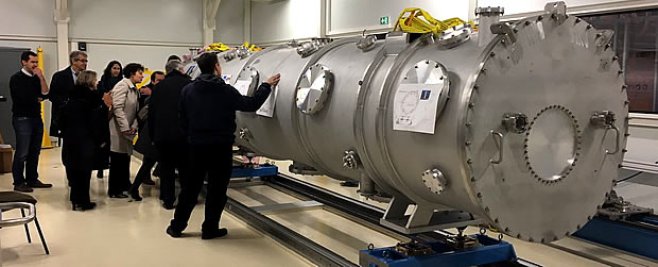
The recent workshop on engineering best practices organized in Bilbao with the support of [EU grant project] BrightnESS was very important to propagate this message to all our in-kind partners.
My main satisfaction is to observe that the importance of using standard software tools is better and better understood and that they are now largely accepted. The preparation of the installation permit for SSM [Swedish Radiation Safety Authority] has been a very fruitful exercise in that respect. More and more teams are now fully committed.
How will you and your sub-project leaders measure success over the next 12 months?
There are a number of milestones to meet. There are those corresponding to something visible, like those that will happen on site. For instance, the ion source [being built by Italian partner INFN-Catania]. In 12 months it should be there. It should be making beam. Another example is the RF test place in the klystron gallery, which should be operational at the end of spring. The site will be very busy next year with a lot of equipment being installed in preparation for the arrival of the accelerating structures.

We will measure success by the fact that this infrastructure will advance at the planned rate over the next year. The installation and early commissioning of the ion source will be the cherry on the cake!
This being said, a lot of things will not be visible on site but it will be essential to have them running smoothly if we want the continuation to be a success. This is the case for example of the construction of the accelerating structures [1, 2, which should be fairly advanced at the end of 2017. We’ll follow closely, together with our in-kind partners, what will happen with the manufacturer. The copper will be already machined and braised for the RFQ [Radio Frequency Quadrupole]. It’s the whole project now that will be advancing.
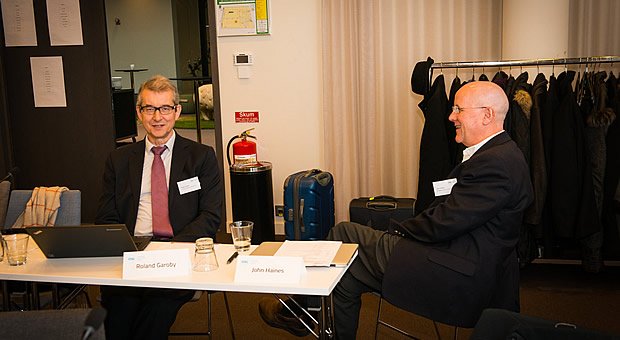
These are only examples for the Accelerator. For the Target, the target wheel in Bilbao [being built by Spanish partner ESS-Bilbao] will be fairly advanced as well as the moderator construction in Jülich [being built by German partner Forschungszentrum Jülich].
So tons of things. I hope by that time also that we will be finished with the signatures of the in-kind contracts. We will celebrate every success, and every success is worth a celebration, but full success will only be possible if all necessary contributions are themselves successful.
Due to the lengthy development of the ESS technical design and the extensive simulations and lab tests performed in the development of many components, it may sometimes seem as if the facility is already functioning as expected—you just need to snap it all in place. Is there a tendency in this sort of project to overlook the real-world challenges of assembly and commissioning?
I have heard indeed at times the comment that once a device has been demonstrated as a prototype the fact that you want to use it afterwards, in an installation, is obvious—it’s just a question of money and that’s it. But no engineer would have such a language. It is essential to demonstrate the validity of a technical solution with a prototype, but it is never trivial to transform it into a series operating smoothly together. We know that very well, and our external advisers regularly remind us also.
The design decisions have been made and prototyping is mostly achieved, so hardly any R&D remains as far as the construction project is concerned. I hope there will be R&D in the future to make equipment better or to improve performance, but this will be part of a future evolution after construction is completed.
That said, now we have here in Lund a very interesting development that will be crucial for the project, which is the klystron modulator—work led by Carlos Martins at ESS. The modulator is a known difficult piece of equipment in our kind of machines because power, voltage, and current are unusually high. It’s not something someone would tell you, “Yes, this is state-of-the-art,” but in practice because you push standard engineering very far, it’s a challenge and it becomes state-of-the-art in fact. Such devices were at the origin of lots of troubles in other facilities and I find it reassuring that we have mastered the technology in Lund. I know many labs are looking over our shoulders with the expectation that they will use it in the future if we are successful. And I know we will be successful.

With the approach of IPAC ’17, organised and hosted by ESS, can you speak to the support ESS has received from the worldwide accelerator community in the development of the world’s most powerful linear proton accelerator?
I will have one of the first talks at the conference and I will certainly underline this because, for me, ESS could not have been built without the experience accumulated by the accelerator community before. I can say so because it’s my community, but I know that for the Target, as well as for neutrons, it’s also built on the shoulders of giants. ESS is not something starting from scratch. Technological developments in Europe, the USA, and Japan were crucial for the ESS design to materialise and be credible.
I want to highlight especially what happened in Europe thanks to CERN, but also largely thanks to the DG-Research [Directorate-General for Research & Innovation] in the European Commission. I have myself led a few of these programs in the last 15 years I was at CERN. With the support of the EC and the DG-Research we fostered common technological developments for accelerators that are now being used for ESS., organised and hosted by ESS, can you speak to the support ESS has received from the worldwide accelerator community in the development of the world’s most powerful linear proton accelerator?
I will have one of the first talks at the conference and I will certainly underline this because, for me, ESS could not have been built without the experience accumulated by the accelerator community before. I can say so because it’s my community, but I know that for the Target, as well as for neutrons, it’s also built on the shoulders of giants. ESS is not something starting from scratch. Technological developments in Europe, the USA, and Japan were crucial for the ESS design to materialise and be credible.
I want to highlight especially what happened in Europe thanks to CERN, but also largely thanks to the DG-Research [Directorate-General for Research & Innovation] in the European Commission. I have myself led a few of these programs in the last 15 years I was at CERN. With the support of the EC and the DG-Research we fostered common technological developments for accelerators that are now being used for ESS.

Really I think Europe—I’m a fan of Europe, it’s clear—that Europe has done tremendous work in that respect. Laboratories that 20 years ago were working individually with their own approach and duplicating work are working much closer and coherently nowadays. It’s by far a different world thanks to the successive European Framework Programmes for Research and Innovation.
What has surprised you the most since coming to ESS from CERN in 2014? How would you compare the two organisations? Do you see them as on a continuum of European science cooperation, or as two different approaches toward similar goals?
In short I would say that nowadays they are very different, but in the long run they should be quite similar. The obvious difference is that CERN is an established organisation with a more than 60-year history. Not without hiccups, by the way, but at least nowadays it is undoubtedly a tremendous success.
I think a big lesson in the history of CERN is that it is so successful and has become the world-leading laboratory for particle physics because it has benefitted from continuous support of the Member States even at times where there were some troubles. But the support was maintained and lessons were drawn that are key to the remarkable success it is now enjoying.
CERN succeeded building the LHC and bringing it already beyond nominal performance. That’s a perfect example of how ESS should evolve. ESS is something for me that obviously must be built, must be successful for science in its first goals, but it can also progress far beyond.
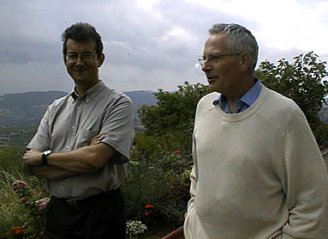
CERN is already diversifying the fields in which it is involved, for a long time now, by using every opportunity to use its installations for other science than particle physics. Technological developments that might be used in future projects are also encouraged, as well as technology transfers like, for example, medical applications. It would make sense for ESS to follow a similar path. There are already proposals in the air for addressing other fields of physics at ESS.
Technology is close to my heart, and in accelerator technology we will first—simply by running this facility, which is made up of state-of-the-art equipment built in huge quantity—we will learn. There will be ideas on how to make it better next time and maybe better even for the sake of ESS itself. For instance if we find means to use less electricity or to go to higher energies at reduced cost. I’m sure plenty of ideas can pop up out of this.
It is really a treasure chest that is being built here. I’m convinced that the local hosts will be positively surprised by what will pop up out of this during its 40-year lifetime, provided it continues to be supported in the same spirit as it so far has been.
For instance, personally, I expect a lot from Science Village. That’s really a great idea and the convergence also with MAX IV [the adjacent world-leading synchrotron commissioned this year] opens many possibilities. Nowadays we are focused on construction, we have a tight schedule, we are building ESS as an organisation, but as time goes by we will look out above the fence and there will be a lot that can happen.
Download:
garoby_interview_pdf



